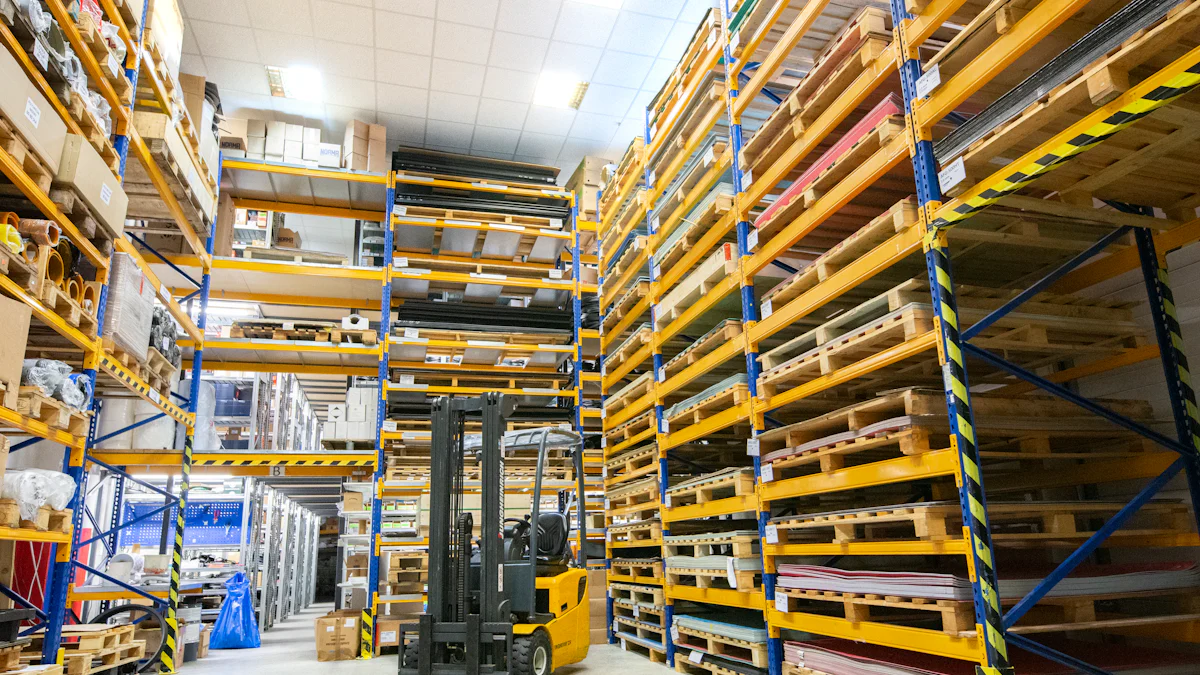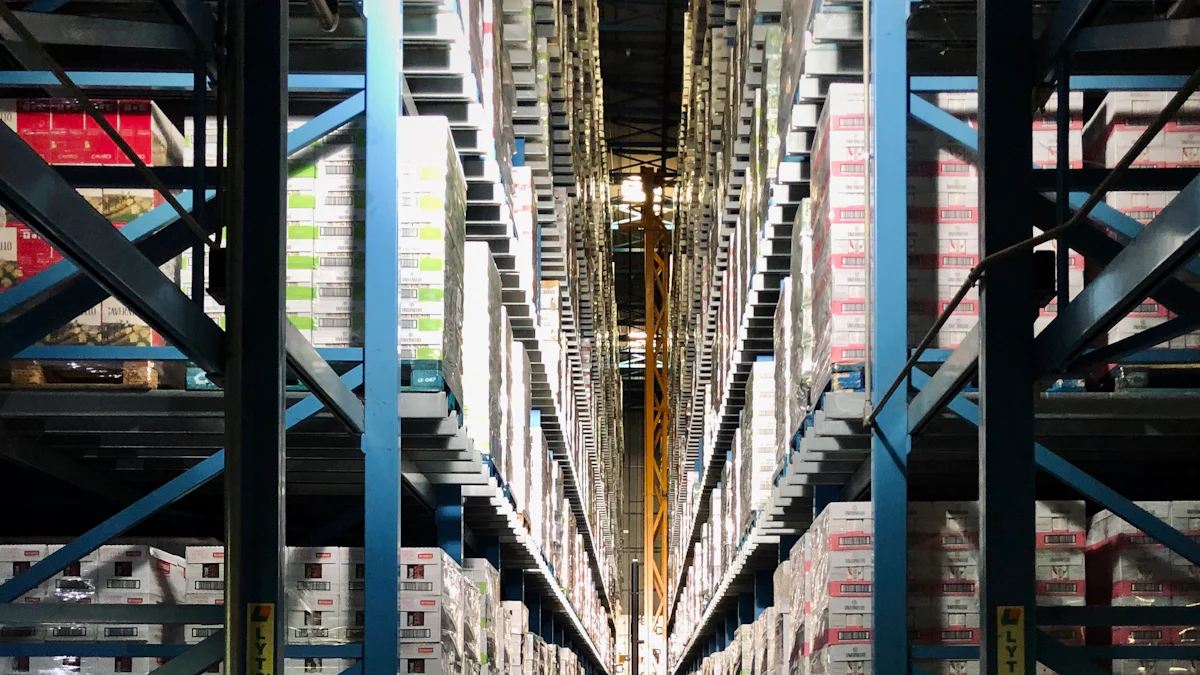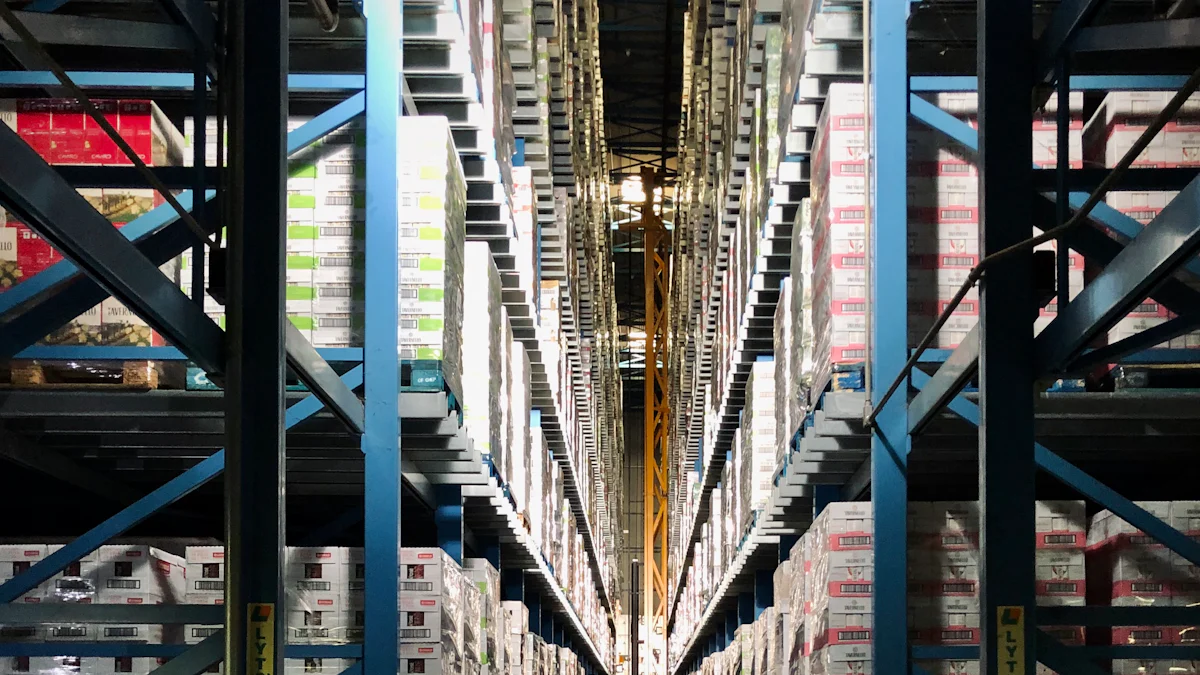Why Warehouse Automation Is Essential for Your Business

Warehouse automation plays a pivotal role in modern businesses, revolutionizing traditional operations and enhancing efficiency. With statistics showing a significant increase in the adoption rate of warehouse automation, it is evident that businesses are recognizing its value. The market's exponential growth, estimated to surpass 30 billion U.S. dollars by 2026, highlights the importance of this transformative technology. As companies strive to reduce costs, increase productivity, and streamline processes, the integration of warehouse automation emerges as a strategic necessity.
Benefits of Warehouse Automation

Enhanced Productivity
Incorporating warehouse automation systems leads to streamlined operations within the facility. By optimizing workflows and automating repetitive tasks, companies can achieve a higher level of efficiency. The seamless integration of technology ensures that every process is executed with precision and speed, ultimately boosting overall productivity.
Implementing automated systems results in streamlined operations, where each task flows seamlessly into the next without delays or bottlenecks. This continuous workflow enhances the overall efficiency of the warehouse, allowing for a more productive environment.
With reduced manual labor through automation, employees can focus on more strategic and complex tasks that require human intervention. This shift not only improves job satisfaction but also increases the output quality and accuracy.
Cost Efficiency
One of the primary advantages of warehouse automation is its ability to lower operational costs significantly. By reducing manual intervention and streamlining processes, businesses can achieve cost savings while maximizing their return on investment (ROI).
Lowering operational costs is a direct result of implementing automation technologies. These systems eliminate inefficiencies and reduce errors, leading to a more cost-effective operation overall.
The increased ROI associated with warehouse automation stems from improved efficiency and reduced overhead expenses. As productivity rises and costs decline, companies experience higher returns on their initial investment.
Improved Safety
Safety is paramount in any workplace, and warehouse automation plays a crucial role in enhancing worker safety while minimizing workplace accidents. By leveraging automated solutions, businesses can create a secure environment for their employees.
Reduced workplace accidents are a key benefit of automation as machines take over hazardous tasks that pose risks to human workers. This proactive approach significantly decreases the likelihood of injuries or incidents.
Furthermore, by enhancing worker safety through automated processes, companies foster a culture of well-being within their workforce. Employees feel more secure in their roles, leading to increased morale and job satisfaction.
Scalability
Easy to Scale Operations
Implementing warehouse automation solutions offers businesses the advantage of scalability, allowing them to adjust operations according to fluctuating demands seamlessly. By integrating automated systems, companies can easily expand their capabilities without compromising efficiency or incurring significant costs. This flexibility ensures that businesses can adapt to changing market conditions and scale their operations as needed.
Effortless Expansion: Warehouse automation provides a foundation for effortless expansion, enabling businesses to increase their capacity without extensive manual intervention. This scalability feature allows companies to meet growing demands efficiently and maintain operational excellence.
Optimal Resource Allocation: With easy-to-scale operations, businesses can allocate resources effectively based on real-time data and demand forecasts. This strategic resource management optimizes workflow processes and enhances overall productivity within the warehouse environment.
Enhanced Adaptability: The scalability of warehouse automation solutions enhances adaptability by facilitating quick adjustments to production levels and inventory requirements. This agility ensures that businesses can respond promptly to market changes and customer needs without disruptions.
Future-Proofing Business
Future-proofing your business through warehouse automation is essential for staying competitive in a rapidly evolving market landscape. By investing in advanced technologies and scalable solutions, companies can prepare for future challenges and opportunities effectively. Future-proofing strategies ensure long-term success and sustainability in an increasingly digitalized industry.
Technological Resilience: Embracing warehouse automation technologies future-proofs your business by ensuring technological resilience against obsolescence. By staying ahead of industry trends, companies can leverage cutting-edge solutions for sustained growth and innovation.
Adaptation to Industry Shifts: Future-proofing through automation enables businesses to adapt swiftly to industry shifts and consumer preferences. This proactive approach allows companies to remain agile and responsive in a dynamic marketplace, securing their position as industry leaders.
Sustainable Growth: Investing in future-proofing measures such as robotics and AI technologies fosters sustainable growth by optimizing operational efficiency and performance. These innovations lay the groundwork for long-term success and profitability while mitigating risks associated with traditional practices.
Incorporating scalable warehouse automation solutions not only enhances operational flexibility but also future-proofs businesses against uncertainties, paving the way for sustained growth and competitiveness in the modern business landscape.
Implementation Strategies

Phased Implementation
Implementing warehouse automation solutions should follow a phased approach to ensure successful integration and operation within the facility. By breaking down the implementation process into manageable steps, businesses can effectively transition to automated systems without disruptions or setbacks.
A step-by-step approach allows companies to methodically introduce automation technologies into their existing workflows. This gradual implementation minimizes resistance to change and provides employees with the necessary time and resources to adapt to new processes.
Avoiding pitfalls during implementation is crucial for the overall success of warehouse automation projects. Common challenges such as inadequate planning, insufficient training, or lack of stakeholder involvement can hinder progress. By identifying potential pitfalls early on and proactively addressing them, businesses can navigate the implementation phase smoothly.
Human-Machine Collaboration
Balancing automation with human labor is essential for creating a harmonious work environment that maximizes efficiency and productivity. The collaboration between machines and human workers optimizes task allocation, leveraging the strengths of both entities for enhanced operational performance.
Achieving a balance between automation and human labor involves assigning tasks based on each entity's capabilities. While machines excel at repetitive and high-volume tasks, humans bring creativity, problem-solving skills, and adaptability to the table. By strategically allocating responsibilities, companies can optimize workflow processes effectively.
Training and adaptation are key components of successful human-machine collaboration in warehouse automation. Providing employees with comprehensive training on operating automated systems ensures smooth integration and minimizes errors. Additionally, fostering a culture of continuous learning and adaptation enables workers to embrace technological advancements confidently.
Technology Integration
Integrating advanced technologies such as AI and ML into warehouse operations enhances efficiency, accuracy, and decision-making processes. By leveraging cutting-edge solutions, businesses can optimize their workflows, improve inventory management, and drive strategic growth initiatives.
AI and ML technologies play a pivotal role in optimizing warehouse operations by analyzing vast amounts of data in real-time. These intelligent systems provide valuable insights into inventory trends, demand forecasting, and operational performance metrics. By harnessing the power of AI-driven analytics, companies can make informed decisions that drive business success.
Robotics and Autonomous Mobile Robots (AMRs) revolutionize warehouse automation by automating material handling tasks with precision and speed. These robotic solutions streamline order fulfillment processes, reduce cycle times, and enhance overall operational efficiency. Incorporating robotics into warehouse operations not only increases productivity but also improves workplace safety by minimizing manual labor-intensive activities.
Embracing warehouse automation is paramount for businesses seeking operational excellence. The recap underscores the transformative impact of automation on productivity and safety. By summarizing the benefits and strategies, companies can optimize efficiency and cost-effectiveness. Looking ahead, investing in scalable solutions and advanced technologies is recommended to future-proof operations. The integration of AI, ML, and robotics will drive sustainable growth and innovation in warehouse management. Stay ahead of the curve by prioritizing automation for a competitive edge in the evolving business landscape.
See Also
Exploring the Future of Supply Chain: AI Integration Tips
Efficient Strategies for High-Tech Manufacturing Supply Chain Challenges
Assessing Your Supply Chain Effectiveness: Discover Today!
Transforming Transportation: The Influence of Supply Chain Advancements
Proactive Planning: JUSDA's Risk Mitigation for Strong Supply Chains
